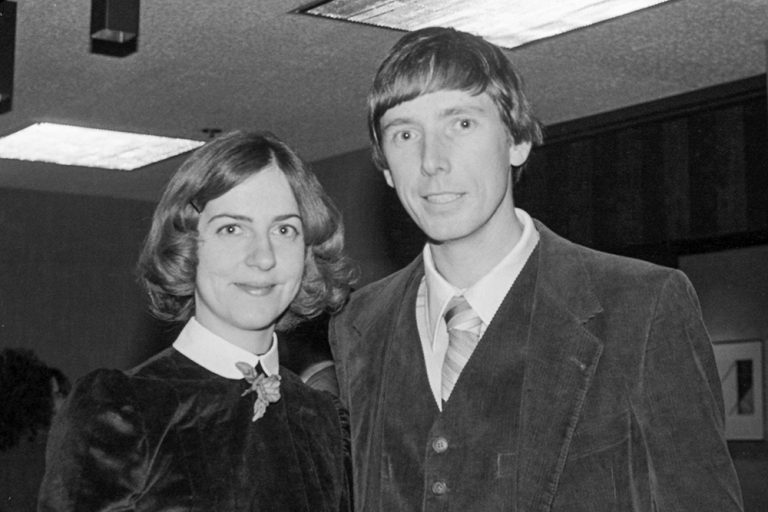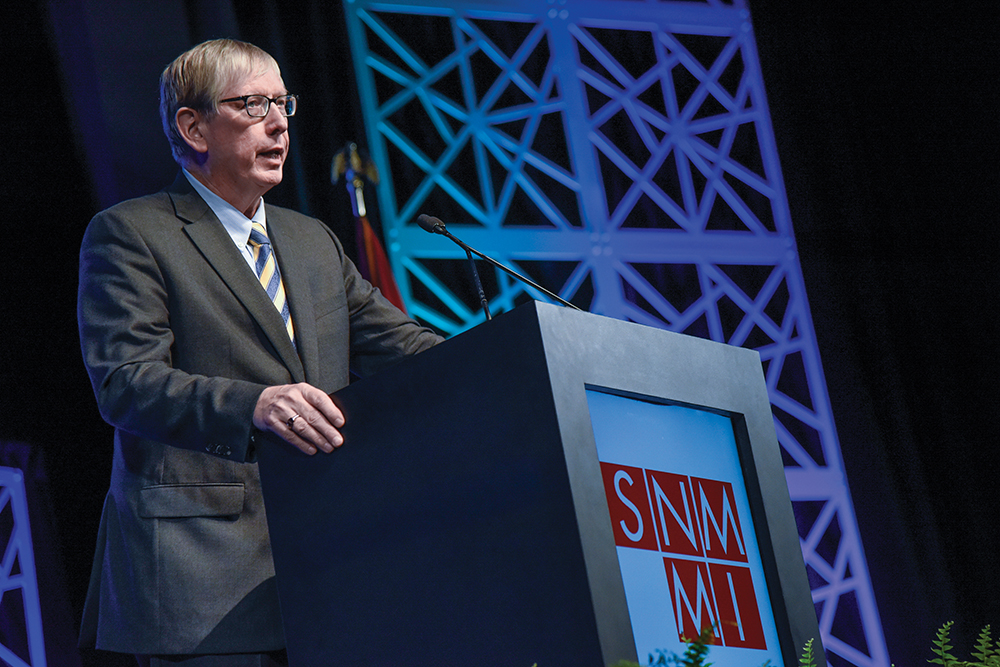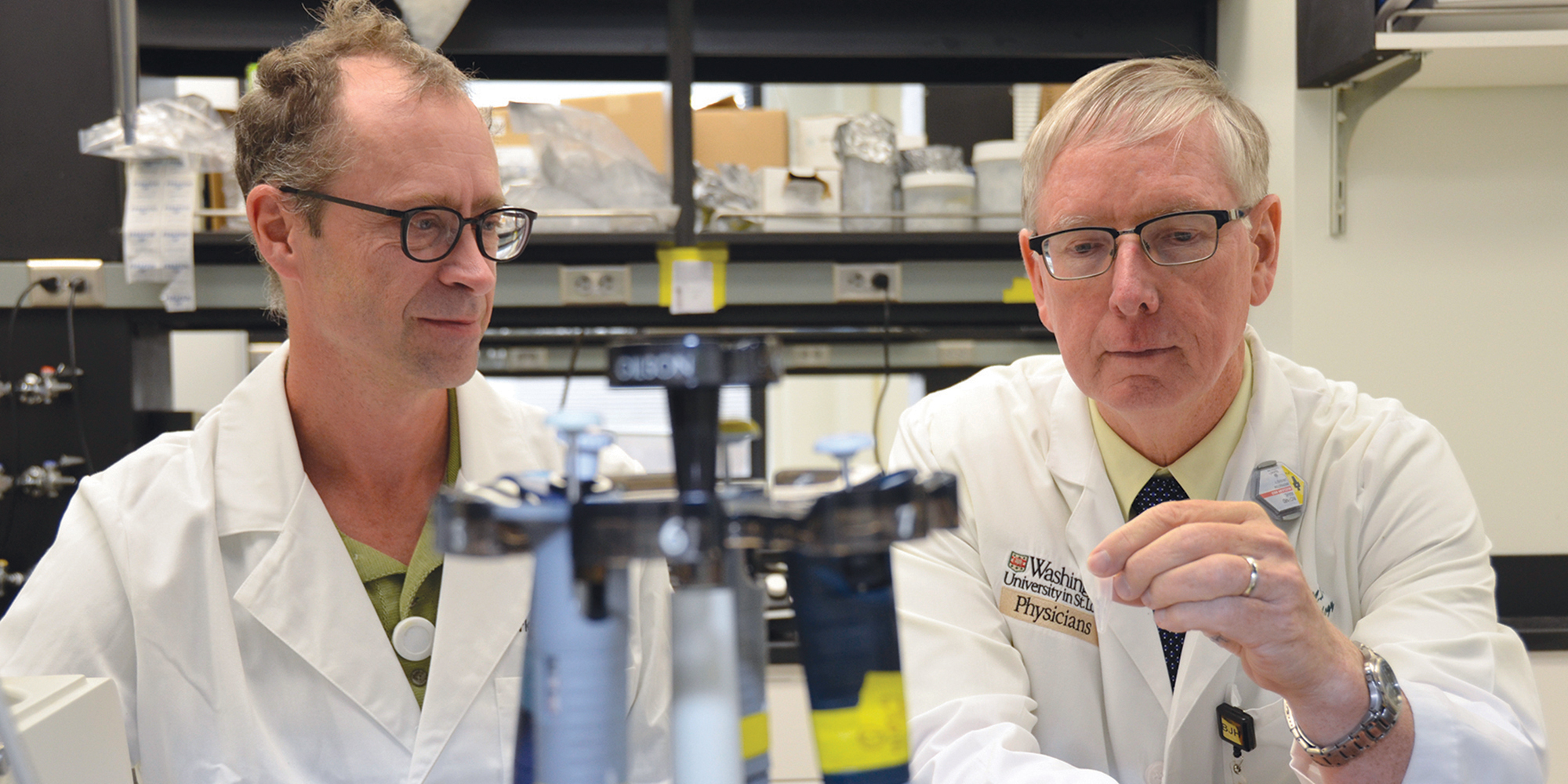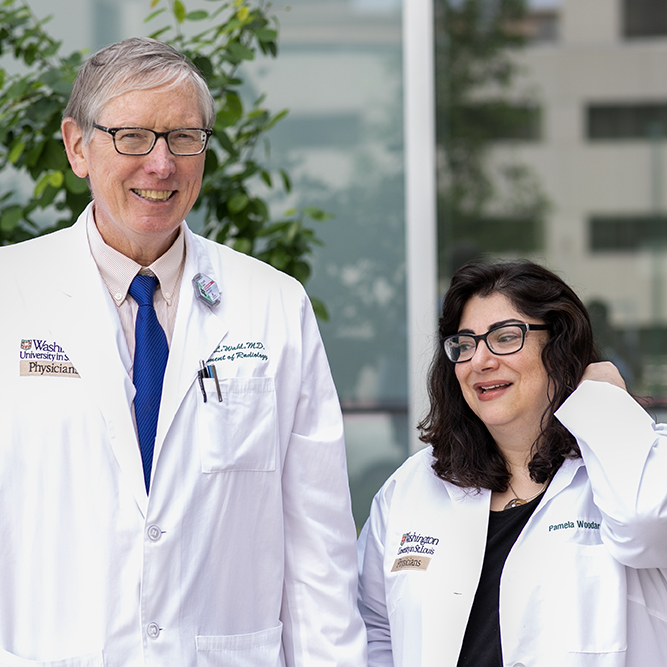When did you first start thinking about pursuing science as a vocation?
I had some scientific and math aptitude and thought maybe I’d become an architect. Then my father told me I’d have to design TV towers and if I did that, I’d have to climb to the top of them to check out the quality of the work. We drove by one that was 2,000 feet tall, and I decided to rethink that idea. Then, when I was in ninth grade, my father had several strokes. I remember going to the University of Iowa, where he’d been hospitalized. I thought, ‘This is pretty interesting; maybe I should consider medicine.’
You received your bachelor’s degree in chemistry from Wartburg College, a small liberal arts college in Waverly, Iowa. How did you end up at WashU?
I knew Washington University had a reputation for training physicians who did research. I had a good experience working with an immunologist named John Atkinson, who got me interested in the physician-scientist model. I felt I’d have more of an impact on the world if I could practice and have scientific observations.
What led you to pursue radiology?
I initially considered being an internist or a cardiologist, but ultimately I liked the breadth of radiology. I remember in one of my labs learning about antibodies, targeting antibodies in vivo and carrying drugs. I had seen this paper about antibody targeting and thought if you can specifically target a molecule in vivo to deliver a payload that would be pretty cool. It got me interested in the overall idea of targeting molecules inside a patient to diagnose and treat disease. I took four months out of my clinical radiology residency to do research, which was very unusual back then. That’s when I got interested in the idea of using the monoclonal antibodies. And because of the tools available here, I was able to figure out how to do antibody imaging in animal models with radiolabeling.

A Few (of Many) Milestones
Some significant moments, prestigious awards and key moves from a decades-long career.
Was being in leadership something you pursued or something that chose you?
I suppose it’s a little bit of both. In 1983, I joined the University of Michigan as an assistant professor, then became a full professor in 1990. The first NIH grants I wrote there all got funded, so I was able to focus on my research and clinical work. Eventually I became director of the imaging clinic but didn’t have a say over all of the facilities and resources. I reached the point where I thought I needed to have a leadership position. By then, I was established enough and was offered the job at Johns Hopkins to be head of nuclear medicine and vice chair of radiology.
In 2014, you accepted the position of chair at MIR and subsequently left Johns Hopkins. Was changing academic institutions a difficult decision?
I didn’t have a lot of second thoughts about it. Hopkins wouldn’t have been a bad place to finish my career, but when the opportunity came up at WashU, I thought I should consider it since the roots of my academic career were in St. Louis. And after 14 years as vice chair and section chief, I felt I had experience that I could contribute more broadly to a radiology department.
What do you consider your most significant contribution(s) as chair?
Selecting people who had leadership abilities and then turning them loose to let them lead. Trying to identify really great talent and then giving them the resources they need to be successful.
What advice can you offer the new chair?

If you want to be successful, the job and your department take absolute priority over anything you’re doing for yourself. Putting the department and its relationship with other departments as your priority and focusing on the missions. It’s a delicate balance because you want excellence in everything. All the missions are important and have to be loved and nurtured. Otherwise, you have imbalance. I also think mentorship as a chair is important. But ultimately, it’s about the patients. The next department head has to remember that the patients should really be at the center of what we’re doing. It’s why we’re here.
What do you see for yourself in the next five years?
I’m going to take a six-month sabbatical to get refreshed on more modern research techniques and see if there are any commercialization opportunities. I still find the concept of targeting radiopharmaceuticals in vivo to cancer to be important. We published three papers in the last few months on being able to cure human lymphoma in animal models. About 25,000 people in the U.S. die of lymphoma each year. We have some next-generation agents I want to work on and try to move toward translation to humans. I’ll also maintain my practice in nuclear medicine, so I expect to do clinical work and provide mentorship to some of our trainees.
What is something most people don’t know about you?
I’ve taken a course on how to drive a Corvette competitively on a racetrack. It was at the Ron Fellows Performance Driving School outside of Las Vegas. Unfortunately, I wasn’t competitive enough. The instructor had to get in the car to tell me to go faster and then stop faster.
Parting Thoughts and Recollections from MIR Colleagues
Published in Focal Spot Spring/Summer 2023 Issue


